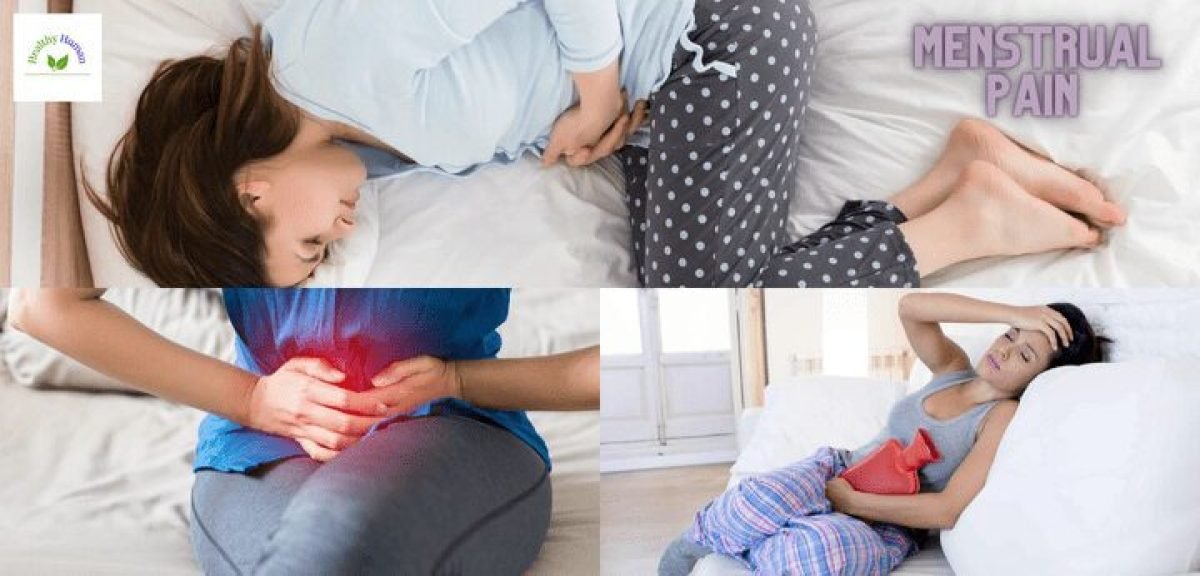Dysmenorrhea is the medical term for menstrual pain. More than half of menstruating women have pain for one to two days each month. Pain is typically very minor. However, for other women, the pain is so bad that it prevents them from carrying out their regular activities for a few days each month.
Menstrual cramps
The medical name for period discomfort is menstrual cramps often known as dysmenorrhea. Although, Dysmenorrhea includes two types: primary and secondary.
Primary dysmenorrhea
Primary dysmenorrhea is the term used to describe regular menstrual cramps that are recurrent and not brought on by another illness. One or two days before your menstruation or when the actual bleeding starts, the pain normally starts. Lower back, thighs, and lower abdomen pain can range in intensity from minor to severe.
You could also experience other symptoms including nausea and vomiting, exhaustion, and even diarrhea in addition to pain, which can normally last 12 to 72 hours. If you have a baby, your regular menstrual pains may completely stop or decrease as you age.
Secondary dysmenorrhea
Secondary dysmenorrhea is the term used to describe painful periods brought on by a condition or illness in the female reproductive system. Pain typically manifests earlier in the menstrual cycle and lasts longer than typical cramping. Normally, you don’t feel sick, throw up, feel tired, or have diarrhea.
Also Read:- Cryopreservation (freezing sperm & eggs)
Causes of painful menstrual Pain
When the uterus tightens due to a substance called prostaglandin, it causes menstrual pains. Throughout your menstrual cycle, the uterus, (muscle organ where a baby develops) contracts. The uterus contracts more forcefully during menstruation. When the uterus contracts too hard, it may press against adjacent blood arteries, preventing the muscular tissue from receiving oxygen. When a muscle loses its oxygen supply for a limited period of time, you experience pain.
Problems with the reproductive organs are the cause of secondary dysmenorrhea’s menstrual discomfort. The following circumstances can result in cramping:
1. Endometriosis
A condition when the endometrium, the tissue that lines the uterus, is located externally. These tissue fragments might result in swelling, scarring, and pain since they bleed during your period.
2. Adenomyosis
A syndrome where the uterine lining extends into the uterine muscle. Along with abnormal bleeding and pain. This illness can result in the uterus growing considerably larger than it should.
3. Pelvic inflammatory disease (PID)
A bacterial infection that originates in the uterus and can spread to other reproductive organs. PID may result in stomach pain or discomfort during sex.
4. Cervical stenosis
The cervix or the uterine entrance becomes smaller
5. Fibroids (benign tumors)
Growth on the uterus’s inside exterior or walls.
Symptoms of menstrual pain
If you get painful periods, you could:
- An abdominal ache that hurts badly (pain may be severe at times)
- A feeling of abdominal pressure
- Hip, lower back, and inner thigh pain
In addition to intense pain, some women may have symptoms like diarrhea, nausea, vomiting, headache, and wooziness.
When to see a doctor
Contact your healthcare practitioner if you experience extreme, unusual, or cramps that last longer than two or three days during your period. It’s crucial to get checked out because both primary and secondary menstrual cramps can be addressed.
You will be questioned about your symptoms and menstrual cycles first. Additionally, your doctor will examine your pelvis. Your doctor inserts a speculum during this examination (an instrument that lets the provider see inside the vagina). The healthcare professional can look at your cervix, uterus, and vagina. Any lumps or alterations will be felt by the doctor. For testing, they could extract a tiny sample of vaginal fluid.
You could require more testing, such as an ultrasound or laparoscopy. Moreover, if your doctor suspects you have secondary dysmenorrhea. Your healthcare professional will talk about therapies if those tests reveal a medical issue.
Get immediate medical attention if you use tampons and experience any of the following symptoms:
- Fever.
- Vomiting.
- Diarrhea.
- Dizziness, fainting, or near fainting.
- A rash that looks like a sunburn.
These are the potentially fatal signs of toxic shock syndrome.
Treatment of menstrual pain
Take ibuprofen or naproxen as soon as cramping or bleeding begins for the best relief. Ibuprofen or naproxen is a member of the non-steroidal anti-inflammatory medicine (NSAID) class of medications. Although, They reduce prostaglandin production. However, If NSAIDs are not available, try another painkiller like acetaminophen.
Put a heating pad or hot water bottle on your abdomen or lower back. Caffeine-containing foods should be avoided. Avoid consuming alcohol and smoking. Give your abdomen and lower back a massage. Regular exercisers frequently experience less pain during their periods. Include exercise in your weekly regimen to help prevent cramping.
If following these instructions doesn’t help you feel better, your doctor may prescribe drugs, such as ibuprofen or another over-the-counter anti-inflammatory drug in a higher dose. Since women who use oral contraceptives typically experience less menstrual discomfort, your healthcare professional may also advise oral contraceptives.
Your healthcare provider will talk to you about the issue causing the pain if testing reveals that you have secondary dysmenorrhea. However, Oral contraceptives, different kinds of medicine, or surgery may be indicated.
Therapies for menstrual pain
Women who experience painful periods frequently look for natural remedies to ease their suffering. Studies on alternate or supplementary techniques have not produced outcomes that are clear-cut. Although, Keep in mind that the FDA (Food and Drug Administration) does not regulate the majority of supplements. You might also find the following techniques helpful:
- Yoga.
- Massage.
- Acupuncture and acupressure.
- Relaxation or breathing exercises.
Also Read: Conditions That Increase Your Risk of Early Menopause




